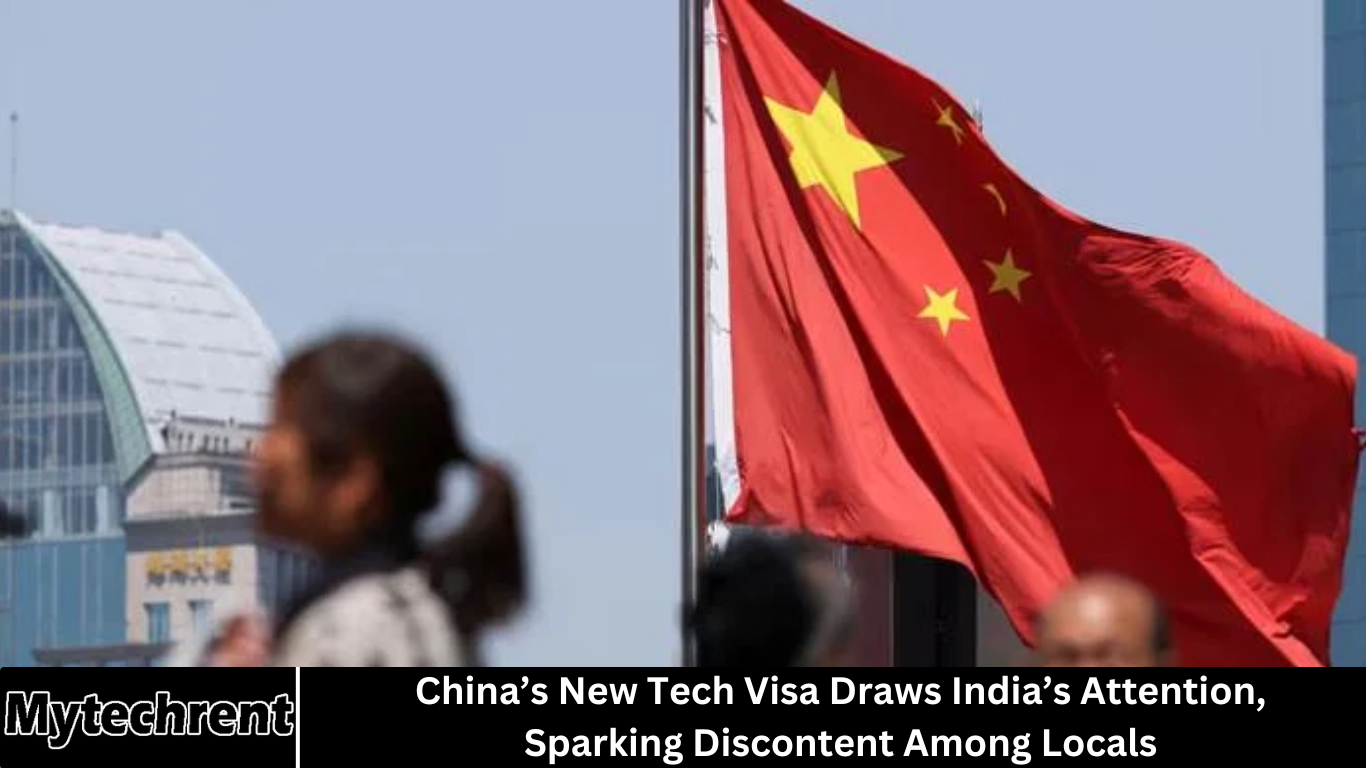China has recently introduced a new tech visa designed to attract skilled professionals in the technology sector. This initiative, officially called the “High-End Talent Visa”, has grabbed global attention, particularly in India, a country with one of the largest pools of IT and tech talent in the world.
- China’s New Tech Visa: What You Need to Know
- Why India Is Paying Attention
- The Local Backlash in China
- Economic Implications for China
- India-China Tech Talent Dynamics
- Experts Weigh In
- Challenges for Indian Tech Professionals
- Potential Opportunities
- Policy Recommendations
- Frequently Asked Question
- What is China’s new tech visa?
- Why has India shown interest in this visa?
- Why are Chinese locals unhappy about this visa?
- Which tech sectors does the visa target?
- What are the challenges for Indians moving to China under this visa?
- How could this visa affect India’s tech workforce?
- What steps can China take to balance foreign recruitment and local workforce concerns?
- Conclusion
While the move is seen as an opportunity by some Indian professionals, it has also ignited concern and discontent among local Chinese workers who fear competition in their domestic job market.
More Read: The Apple Watch Ultra 3 You’ve Been Waiting For—Apple Just Didn’t Make It
China’s New Tech Visa: What You Need to Know
In August 2025, China unveiled a visa program targeting highly skilled professionals in technology and innovation sectors, including artificial intelligence, software development, biotechnology, and semiconductor manufacturing. The visa offers multiple incentives:
-
Faster processing times compared to regular work visas.
-
Long-term residency options, with eligibility for permanent residency after a few years.
-
Tax incentives and startup benefits for foreign entrepreneurs.
-
Access to China’s leading tech hubs, such as Shenzhen, Beijing, and Shanghai.
This visa aims to address a critical need for top-tier talent in emerging technologies as China positions itself as a global leader in AI, quantum computing, and next-generation semiconductors.
Why India Is Paying Attention
India, home to over 5 million IT professionals, is closely monitoring China’s new tech visa policy. Several factors contribute to India’s heightened interest:
-
Highly Skilled Workforce: India produces hundreds of thousands of tech graduates annually. Many Indian professionals are eager to explore international opportunities.
-
Proximity and Cultural Ties: Although India and China share a complex geopolitical relationship, geographic proximity and cultural familiarity make relocation feasible for Indian tech talent.
-
Career Growth Opportunities: China’s booming tech sector, fueled by state-backed research and development initiatives, presents promising career trajectories and high remuneration packages.
Industry experts suggest that the new visa could lead to a brain drain in India, as skilled professionals may be enticed by lucrative opportunities abroad.
The Local Backlash in China
While foreign tech professionals may view China’s visa as an opportunity, many local Chinese citizens have expressed frustration. The discontent stems from multiple sources:
-
Job Market Competition: Local tech workers fear being overshadowed by foreign talent willing to work for higher pay or under more flexible conditions.
-
Income Disparity Concerns: Chinese workers worry that the government’s incentives for foreign talent could widen income inequality in the tech sector.
-
Cultural and Workplace Tensions: Rapid influxes of foreign workers may create cultural clashes in professional environments, further exacerbating local discontent.
Social media in China has seen debates around this issue, with hashtags translating to “Protect Local Jobs” trending in several regions.
Economic Implications for China
China’s tech visa could have significant economic implications:
-
Boosting Innovation: By attracting global tech talent, China aims to accelerate research and development in high-tech sectors.
-
Enhancing Global Competitiveness: International expertise could help Chinese companies expand their global reach and enhance their technological capabilities.
-
Risks of Domestic Backlash: If local discontent grows, it may lead to policy adjustments, strikes, or protests in critical urban tech hubs.
Analysts caution that while the visa could bring innovation and growth, careful management is necessary to balance foreign recruitment with domestic workforce interests.
India-China Tech Talent Dynamics
India and China have long been compared as technological powerhouses in Asia. India’s tech sector is driven primarily by software development, IT services, and startups, while China’s focus lies in hardware innovation, AI, and advanced manufacturing.
The introduction of China’s new tech visa could shift the dynamics:
-
Talent Migration Patterns: India may see a portion of its tech workforce exploring opportunities in China, particularly mid-career professionals seeking rapid growth.
-
Skill Exchange Opportunities: Collaborative projects between Indian and Chinese professionals could boost innovation, provided geopolitical tensions are managed.
-
Salary Competitiveness: Indian companies may need to adjust salary packages and retention strategies to prevent talent outflow.
Experts Weigh In
Tech industry experts have shared mixed reactions to China’s new visa policy:
-
Dr. Anil Mehta, Tech Analyst, Bangalore: “China is signaling that it wants to compete globally in advanced tech. Indian talent is recognized worldwide, and this visa opens a door for collaboration but also introduces new competition.”
-
Liang Wei, HR Executive, Shenzhen: “While attracting foreign talent is crucial, we must ensure that local Chinese employees feel secure and valued, otherwise it could create tension in the workplace.”
These insights suggest that the policy’s success depends on striking a balance between global talent recruitment and local workforce satisfaction.
Challenges for Indian Tech Professionals
For Indians considering relocation to China, the following challenges must be considered:
-
Language Barrier: Mandarin proficiency is often essential for professional integration.
-
Cultural Adaptation: Work culture in China can be hierarchical and highly competitive.
-
Geopolitical Risks: India-China relations have fluctuated in recent years, which could affect visa policies and business operations.
-
Cost of Living: Major Chinese cities such as Beijing and Shanghai have high living costs, potentially offsetting salary benefits.
Despite these challenges, many Indian professionals remain curious about the opportunities presented by China’s tech ecosystem.
Potential Opportunities
The new tech visa could create significant opportunities for both India and China:
-
Cross-Border Collaboration: Indian software experts may contribute to Chinese AI projects or semiconductor research.
-
Startup Ecosystems: Indian entrepreneurs could leverage China’s tech infrastructure to scale startups quickly.
-
Knowledge Transfer: Indian professionals working in China could bring back advanced knowledge and best practices to India, enriching the domestic tech industry.
Such opportunities, however, depend on strong support from both governments and a conducive business environment.
Policy Recommendations
To maximize the benefits of China’s tech visa while addressing local concerns, experts recommend:
-
Integration Programs: Providing language and cultural orientation programs for foreign tech workers.
-
Balanced Recruitment: Ensuring local talent is not sidelined through quotas or incentives.
-
Transparent Communication: Educating both domestic and foreign professionals about visa benefits, workplace rights, and career pathways.
-
Collaboration Initiatives: Encouraging joint projects between Indian and Chinese tech firms to foster innovation and minimize competition tensions.
These measures could help China attract global talent while maintaining harmony with local employees.
Frequently Asked Question
What is China’s new tech visa?
China’s new tech visa, officially known as the High-End Talent Visa, is designed to attract highly skilled professionals in technology sectors like AI, software development, biotechnology, and semiconductors. It offers fast processing, long-term residency, tax benefits, and access to major tech hubs.
Why has India shown interest in this visa?
India has a large pool of skilled IT and tech professionals. The visa offers Indian talent opportunities for career growth, higher salaries, and exposure to China’s advanced tech ecosystem, making it an attractive option for mid-career and highly skilled professionals.
Why are Chinese locals unhappy about this visa?
Local discontent arises from concerns about job competition, income disparity, and potential cultural clashes in workplaces. Many fear that an influx of foreign talent could limit career opportunities for domestic professionals.
Which tech sectors does the visa target?
The visa targets high-demand sectors including:
- Artificial Intelligence (AI)
- Software Development
- Biotechnology and Life Sciences
- Semiconductor and Hardware Engineering
- Emerging technologies like quantum computing
What are the challenges for Indians moving to China under this visa?
Challenges include:
- Language barrier (Mandarin proficiency is often required)
- Cultural adaptation in hierarchical workplaces
- Geopolitical risks affecting policies
- High cost of living in cities like Beijing and Shanghai
How could this visa affect India’s tech workforce?
The visa could lead to a partial brain drain, with skilled Indian professionals relocating to China. At the same time, it may create opportunities for cross-border collaboration and knowledge transfer back to India.
What steps can China take to balance foreign recruitment and local workforce concerns?
Experts recommend:
- Integration programs for foreign workers
- Balanced recruitment quotas to protect local jobs
- Transparent communication about benefits and career pathways
- Encouraging joint projects between domestic and foreign talent to reduce tension
Conclusion
China’s new tech visa represents a bold step in the country’s quest to become a global technology leader. While it offers exciting prospects for Indian tech professionals, it has also sparked concern among local Chinese workers.
The success of this initiative will largely depend on how effectively China manages the balance between foreign talent attraction and domestic workforce satisfaction.








